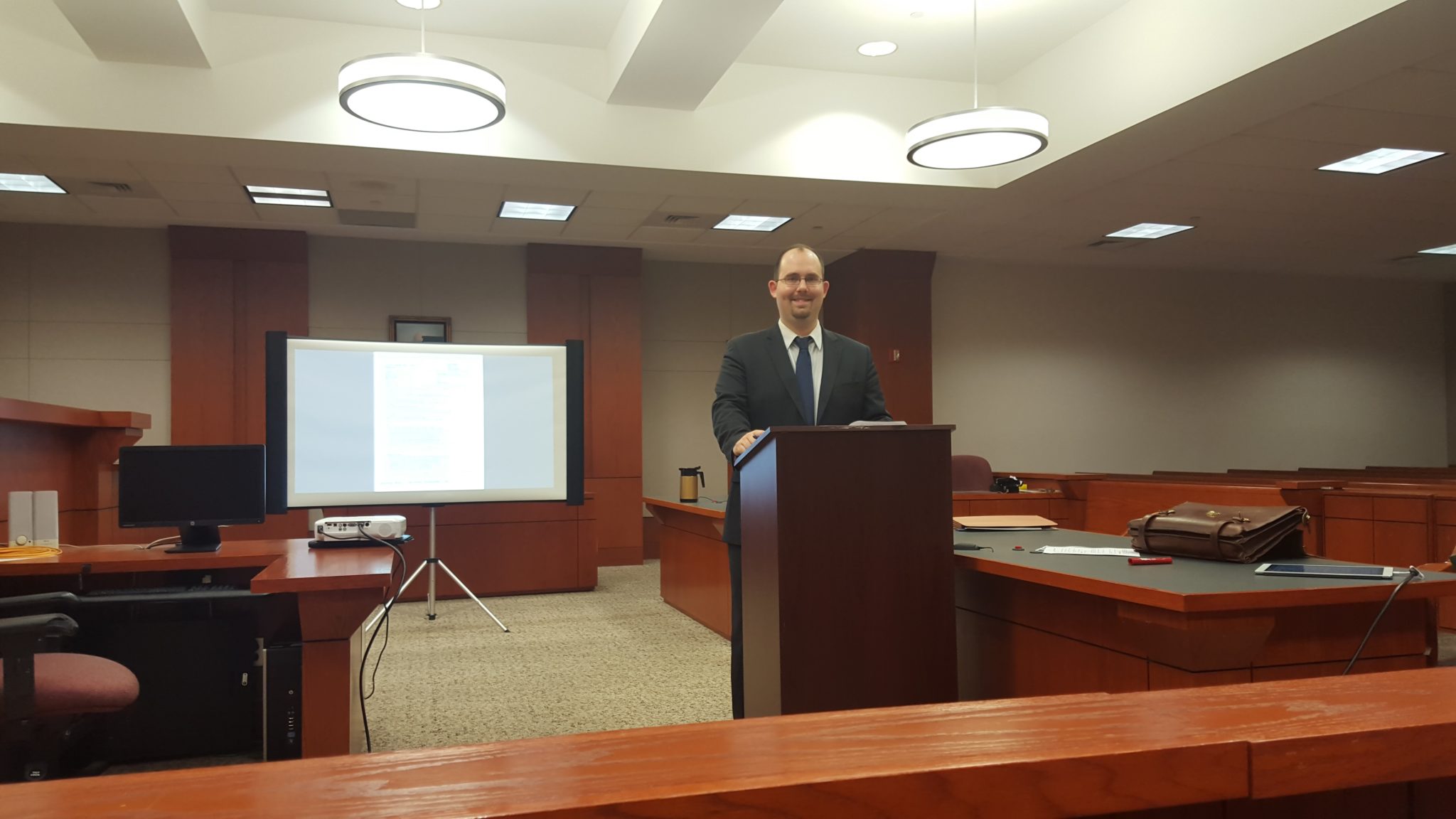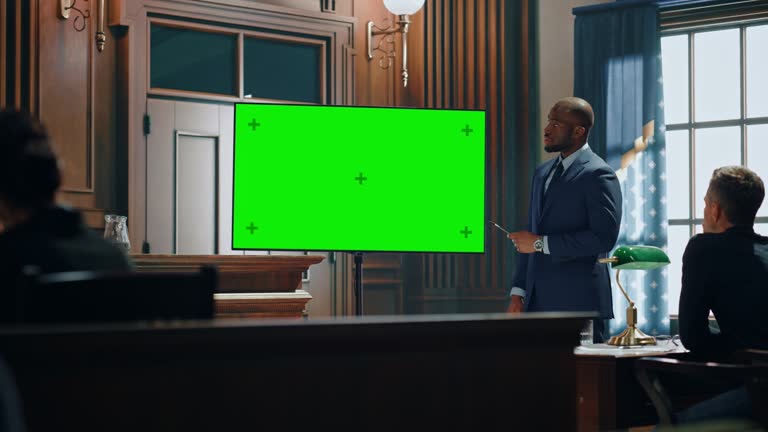Navigating the Intricacies of Trial Presentations: Tips for Seamless Distribution and Compelling Debates
In the world of lawful procedures, the art of test presentation stands as a crucial component of success. As attorneys browse the intricate internet of court room dynamics, the capacity to perfectly supply arguments and proof while captivating the court's focus becomes extremely important. The complexities intrinsic in test presentations need a fragile balance of skill, skill, and strategy. By developing methods that make certain a polished shipment and crafting engaging debates that reverberate with the audience, attorneys can substantially boost their advocacy. In a world where persuasion reigns supreme, grasping the ins and outs of test discussions is not merely an option but a requirement for those seeking to dominate in the court room.

Recognizing Test Objectives
To efficiently navigate a trial, it is vital to have a clear understanding of the objectives that require to be attained. Prior to tipping right into the court, lawful groups must specify their objectives and wanted end results. These purposes work as guiding principles throughout the trial, shaping strategies and influencing decision-making processes.
Understanding trial objectives involves a comprehensive analysis of the case, lawful criteria, and the customer's benefits. Trial Presentations. It calls for a meticulous examination of the facts, recognizing vital concerns, and preparing for prospective difficulties. By setting specific and measurable objectives, attorneys can tailor their presentations and arguments to align with the wanted outcomes
Furthermore, a clear grasp of test goals allows legal groups to prioritize evidence, witnesses, and lawful disagreements efficiently. It permits the growth of a meaningful narrative that reverberates with the discretionary, reinforcing the general instance discussion.

Organizing Evidence Efficiently
Having a clear understanding of trial purposes lays the structure for organizing evidence properly in lawful procedures - Trial Presentations. By aligning the discussion of evidence with the desired end results of the test, legal groups can enhance their arguments and boost their persuasiveness. One critical element of organizing proof is categorization. Organizing proof based on motifs or significance to specific lawful elements can aid enhance the presentation and make intricate info extra absorbable for the judge or court.
An additional key component in organizing proof effectively is developing a sensible flow. Offering evidence in a meaningful and consecutive manner can assist construct a compelling story that sustains the legal disagreements being made. In addition, using aesthetic help such as graphes, charts, or timelines can even more boost the company of evidence and help in making clear complex connections or series of occasions.
Furthermore, guaranteeing that all proof offered is appropriate and permissible to the instance is important. Inadmissible or unnecessary proof can interfere with the strength of the disagreement and potentially hurt the reputation of today party. Consequently, a meticulous testimonial and selection go to my blog process ought to be carried out to consist of only the most impactful and lawfully audio evidence in the trial discussion.
Crafting Persuasive Narratives
Crafting engaging narratives plays a critical duty in offering influential arguments throughout lawful process. A well-crafted story has the power to astound the target market, stimulate feelings, and inevitably guide the choice for the here and now event. When creating a story for a test presentation, it is important to develop a clear storyline that highlights bottom lines and connects them in a coherent manner. Begin by laying out the realities of the instance in an engaging way, guaranteeing that the sequence of events is very easy to adhere to. Present characters efficiently, providing history details that assists the view audience understand their inspirations and activities. In addition, including brilliant descriptions and engaging language can bring the story to life, making it a lot more memorable for the judge and court. By weaving together proof, testament, and lawful arguments right into a influential and natural narrative, attorneys can effectively support for their clients and increase the chance of a positive outcome in the court room.
Understanding Aesthetic Aids
Efficient usage of visual aids is vital to enhancing the effect and quality of trial presentations. Visual help, when made use of strategically, have the power to simplify complicated information, strengthen bottom lines, and leave a lasting perception on the discretionary. To understand aesthetic aids in trial presentations, it is critical to ensure that they are clear, concise, and appropriate to the debates being made.
When incorporating visual aids, such as charts, charts, timelines, or pictures, right into a trial presentation, visit this page it is important to maintain them aesthetically appealing yet expert. The visuals need to enhance the spoken debates, giving an aesthetic depiction of the details being gone over without frustrating the target market with unneeded information.
Additionally, exercising with the visual aids in advance is essential to guarantee a seamless shipment during the trial. Familiarizing oneself with the content, transitions, and timings of each aesthetic aid can assist keep the circulation of the discussion and stop technological problems that may develop.
Delivering Impactful Closing Disagreements
A compelling closing debate serves as the end result of a trial presentation, enveloping the core narrative and encouraging the judge and jury in the direction of a beneficial choice. Begin by describing the major arguments that support your customer's position, highlighting why the proof presented throughout the test sustains your narrative.
Furthermore, integrating psychological charm can better reinforce your closing argument. Ultimately, a well-crafted closing argument should leave a long lasting perception, engaging the court and jury to rule in your customer's support.
Final Thought
In final thought, understanding test discussions includes comprehending goals, organizing evidence, crafting narratives, utilizing visual help, and supplying impactful closing debates. By applying these approaches properly, legal representatives can offer their situation effortlessly and make engaging disagreements in the courtroom. It is essential to navigate the intricacies of test presentations with precision and ability to accomplish success in legal proceedings.
By straightening the discussion of proof with the preferred outcomes of the trial, lawful teams can strengthen their debates and improve their persuasiveness (Trial Presentations). To grasp visual help in trial presentations, it is crucial to make certain that they are clear, succinct, and appropriate to the arguments being made
An engaging closing disagreement serves as the end result of a test discussion, encapsulating the core story and encouraging the judge and jury in the direction of a beneficial decision. Begin by laying out the primary debates that sustain your client's placement, emphasizing why the proof provided throughout the test supports your story.In final thought, understanding test presentations includes understanding goals, organizing evidence, crafting stories, using aesthetic aids, and supplying impactful closing arguments.